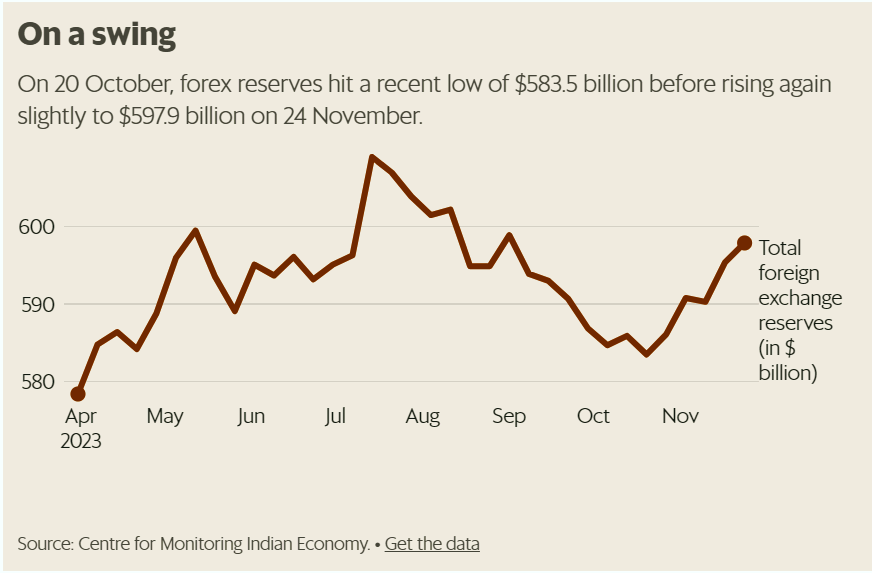Context: India’s forex reserves increased from $2.538 billion to $597.935 billion for the week ending November 24, the Reserve Bank of India (RBI).
India’s Forex Reserves Surge by $597.9 bn
- On 20 October, India’s Forex Reserves hit a recent low of $583.5 billion before rising again slightly to $597.9 billion on 24 November.
- The return on the 10-year US government bond fell in November and now stands at around 4.2%. The fall in returns has encouraged FIIs to bring money back into India.
- So, with FII dollars coming into the country again, the RBI hasn’t needed to draw on its dollar reserves to defend the rupee. This is why forex reserves have risen to close to $598 billion.

What is a Forex Reserve?
- Forex reserves are foreign currency assets held by countries’ central banks.
- Composition: These may include foreign currencies, bonds, treasury bills, and other government securities.
- Purpose: To make international payments and hedge against exchange rate risks.
- Reserves are denominated and expressed in the US dollar.
- India’s Forex Reserve comprises:
-
- Foreign currency assets (FCAs)
- Monetary gold
- Special drawing rights (SDRs),
- Reserve positions in the IMF.
Foreign currency assets (FCAs):
- Foreign currency assets (FCAs):These are maintained in currencies like the US dollar, euro,, Australian dollar.
- It is expressed in terms of dollar.
Special Drawing Rights (SDRs)
- Special Drawing Rights (SDRs) are supplementary foreign exchange reserve assets defined and maintained by the International Monetary Fund (IMF).
- SDR is not a currency, instead represents a claim to currency held by IMF member countries for which they may be exchanged.
Reserve positions in the IMF
- The reserve tranche is a segment of an International Monetary Fund (IMF) member country’s quota that is accessible without fees or economic reform conditions.
|
![]() 6 Dec 2023
6 Dec 2023
